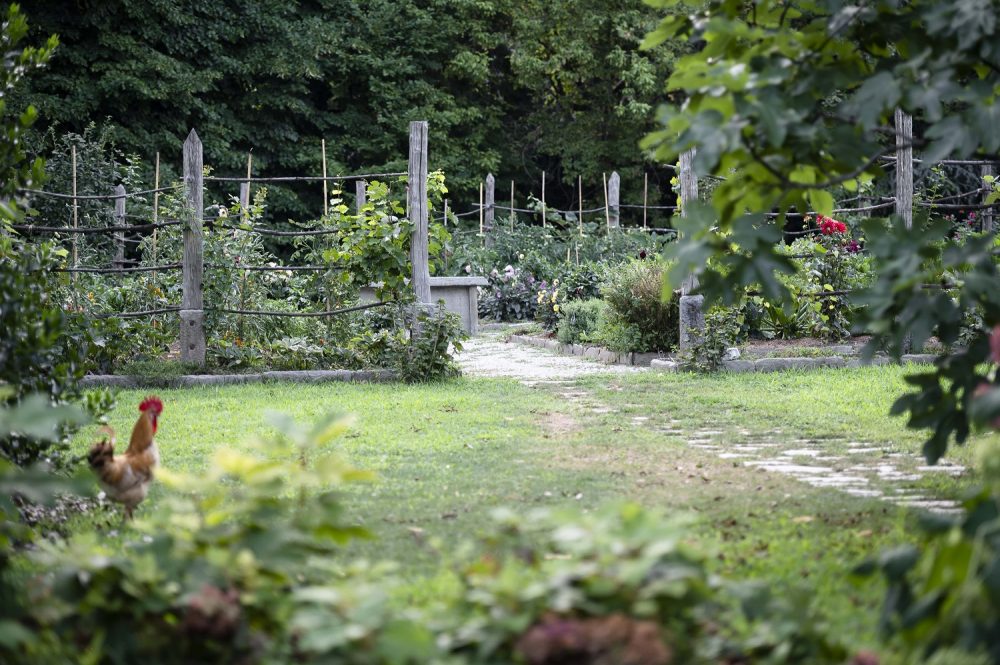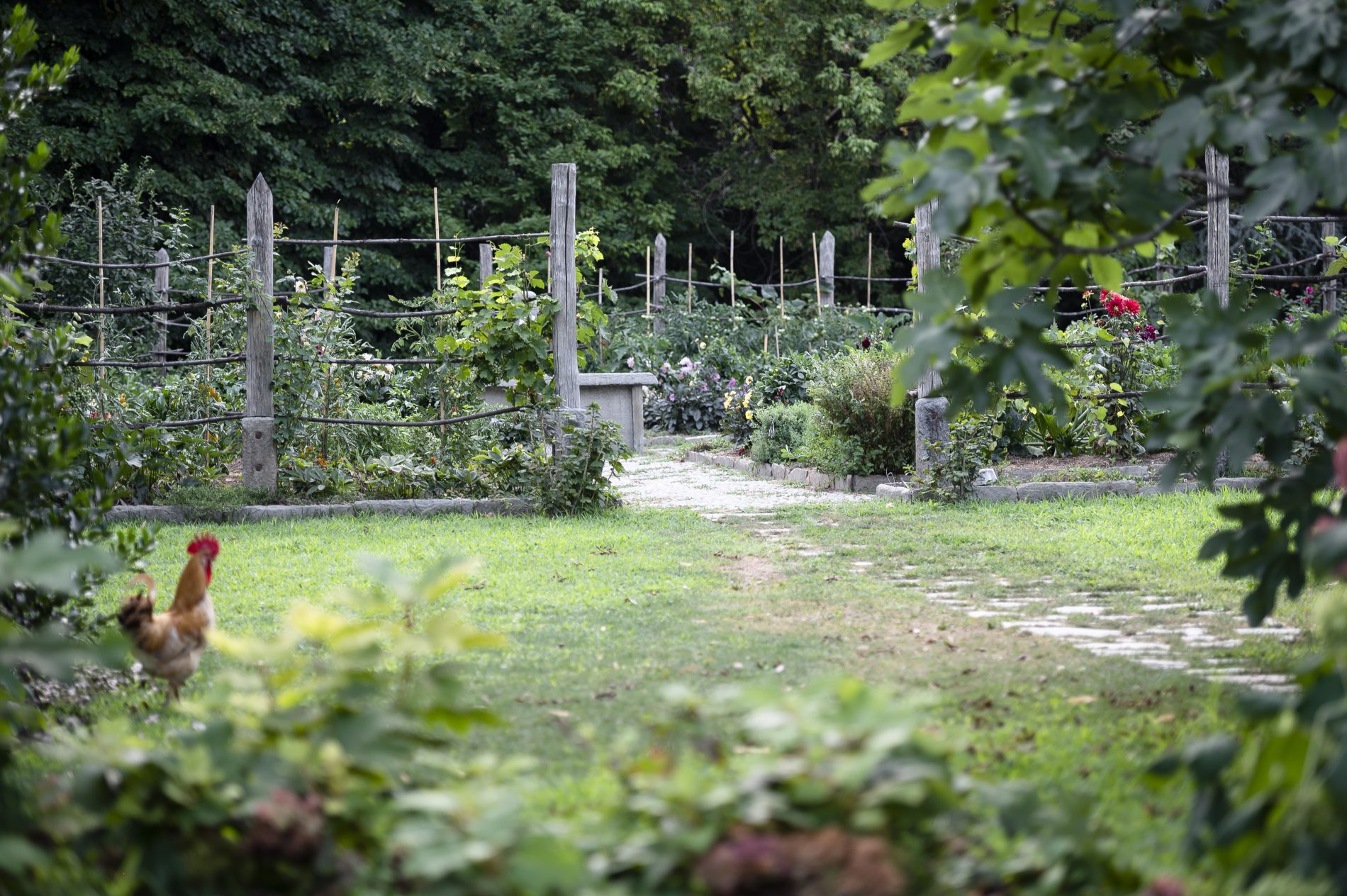The Farm Buildings

Audio
Descrizione
Behind the castle proper we come to the Rural Courtyard and its farm buildings.
The buildings lie along the axes traced out by the residential wings of the castle and form a large, enclosed courtyard, which is connected to the smaller Internal Courtyard. This arrangement of interconnecting courtyards can be seen in an original eighteenth-century drawing of the manor house from the time of Maurizio Massel di Caresana. After 1950, however, the layout was lost. Until the death of Countess Sofia Cacherano di Bricherasio, stewards were responsible for farming activities and the management of these areas. The last of those stewards, Francesco, lived on the estate until 2010.
The one- and two-story farm buildings here present all the canonical features typical of an eighteenth-century Piedmontese farm. There is the open-sided shed with its plain brick pillars, used as a depot for agricultural vehicles and machinery; a cowshed and stable for the horses, with a barn on top to keep hay; lodgings for the tenant farmers, each with a house number, and then a chicken coop and big oven for baking bread. The buildings are all made of brick mixed with stone and the ground floor rooms still feature elements linked to how they were originally used,
such as mangers, fireplaces, brick stairs with oak slats for the risers, and vaulted ceilings in the stables featuring brickwork laid in a herringbone pattern.
In 2020 the area was cleared out, removing all the material left abandoned here from last century. Doing so brought to light a series of details that reflect the fine tastes of the noble proprietors, such as the two stone columns inside the stables, the grand fireplace in the steward’s lodging, and, under the weeds that had grown over the ground around the farmyard buildings, the classic cobblestone pavement traditionally found in Piedmont.
The restoration project took a thoughtful approach to this area, involving discreet and conservative interventions essential to preserving the architectural elements and the old, silent memory of the work that went on here.
Nelle vicinanze trovi
Ti trovi qui
